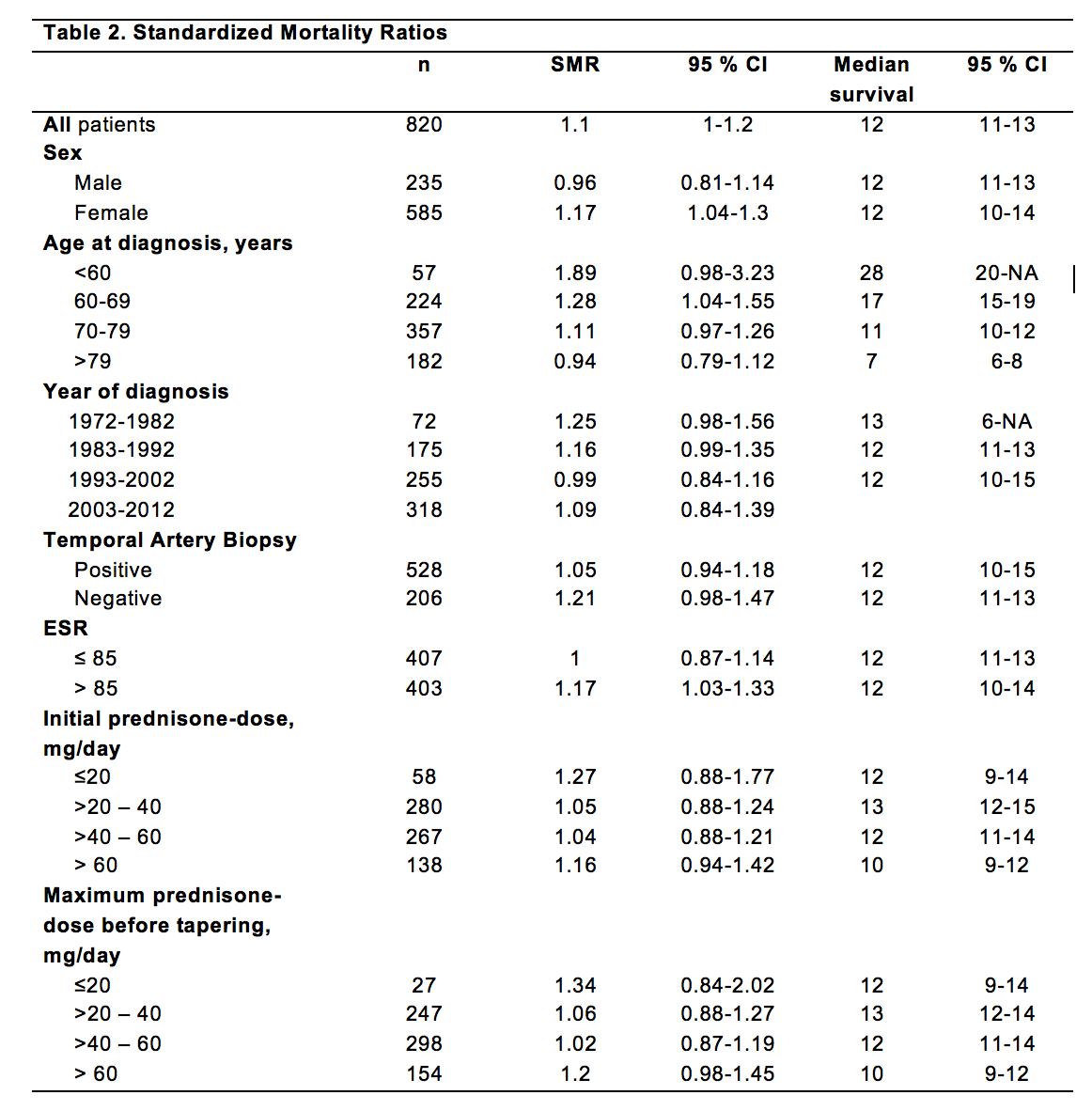Session Information
Session Type: ACR Poster Session B
Session Time: 9:00AM-11:00AM
Background/Purpose: Giant cell arteritis (GCA) is the most common systemic vasculitis in people ³ 50 years of age and the disease is associated with potentially life-threatening complications. Nevertheless, most studies have shown little or no significant difference in the mortality rates observed between GCA patients and non-GCA subjects. However, the epidemiology is changing as the elderly population increases. The aim of this study was to investigate the epidemiology of GCA in an expected high-incidence region over time.
Methods: This is a retrospective cohort study of patients diagnosed with GCA in the hospitals of Bergen Health Area (Helse Bergen) during 1972-2012. The International Classification of Diseases (ICD)-coding system was used to identify patients from hospital records, ICD-8 (446.4) for 1972-1987, ICD-9 (446.5) for 1987-1998 and ICD-10 (M31.5-6) for 1999-2012. The diagnosis was verified according to ACR 1990 classification criteria by review of patient charts. Patient outcomes were documented by reviewing patient charts from time of diagnosis until death or end of study (31 Dec 2012). Information on time and cause of death was collected from the Norwegian Cause of Death Registry. Standardized mortality ratio (SMR) was calculated using the observed patient mortality and the death rates of the Norwegian population (age- and gender-matched) per 100 000.
Results: Eight-hundred twenty patients satisfied the ACR classification criteria for GCA. Among these there were 71 % females and 29 % males. Five-hundred twenty-eight patients (64 %) had a positive temporal artery biopsy (TAB) and 206 patients (25 %) had a negative TAB. For the remaining 86 patients (11 %) TAB was not performed or TAB results were inconclusively or insufficiently reported. Patient characteristics are presented in table 1. Four-hundred forty-three patients (54 %) died during the follow-up period. Median survival time was 12 years (95% CI 11-13). The overall SMR was 1.1 (95% CI 1-1.2). Female sex, younger age at time of diagnosis and high (>85) ESR at the time of diagnosis were found to be associated with increased mortality. Neither TAB-result nor decade of diagnosis showed statistically significant effect on survival. SMRs and median survival times are presented in table 2.
Conclusion: We did not find statistically significant difference in the overall mortality of GCA-patients compared to the general Norwegian population, but our results indicate that gender, age and level of ESR at the time of diagnosis may have prognostic impact. 
To cite this abstract in AMA style:
Brekke LK, Diamantopoulos AP, Fevang BT, Aβmus J, Gjesdal CG. Mortality and Survival of Patients Diagnosed with GCA in Bergen (Western Norway) 1972-2012 [abstract]. Arthritis Rheumatol. 2016; 68 (suppl 10). https://acrabstracts.org/abstract/mortality-and-survival-of-patients-diagnosed-with-gca-in-bergen-western-norway-1972-2012/. Accessed .« Back to 2016 ACR/ARHP Annual Meeting
ACR Meeting Abstracts - https://acrabstracts.org/abstract/mortality-and-survival-of-patients-diagnosed-with-gca-in-bergen-western-norway-1972-2012/

